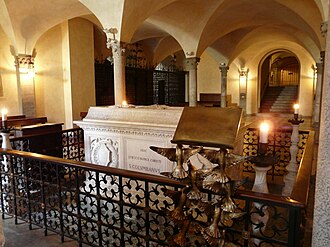20 November 1917: The Battle of Cambrai began on this day. The British High Command under General Haig wished to take a major position on the German ‘Hindenburg Line’ - a very powerful and well defended set of lines and structures to which they had withdrawn to earlier in the year. The British adapted some novel tactics to take a chunk out of the German defenses before Cambrai that had not been tried previously on such a scale. The attack was to be carried out by General Byng’s Third Army in the nature of a coup de main, “to take advantage of the existing favourable local situation” where “surprise and rapidity of action are … of the utmost importance”.
Initially a British victory it overwhelmed the German defenses and made - by WW1 standards - a rapid advance. The key to such success was a very brief but extremely heavy initial bombardment and the mass use of almost 500 Tanks that took the Germans completely by surprise. The use of numerous aircraft in a tactical role was also employed. The British High Command were somewhat surprised too as they failed to have enough Reserve divisions on hand to exploit their early gains. Some days later in England church bells were rung out to celebrate a ‘Victory’ for the first time since the War began in 1914.
On this day regiments from two Irish Divisions took part - the 36th (Ulster) Division & the 16th (Irish) Division. The 36th was deployed on the main line of advance at Cambrai on the far left flank and the 16th was further north at Bullcourt in a major diversionary attack. The attack opened with an intensive predicted-fire barrage on the Hindenburg Line and key points to the rear, which caught the Germans by surprise. Initially, this was followed by the curtain of a creeping barrage behind which the tanks and infantry followed. At Cambrai the planes of the RFC were used overhead to mask the noise of the tanks moving up to their start lines. The 36th (Ulster) Division attacked well and moved up the dry excavations of the Canal du Nord, and lay alongside the Bapaume-Cambrai road by nightfall.
The following day the advance was to be renewed & to the north, the 36th (Ulster) Division, planning to continue their advance beyond Moeuvres, waited for the success signal, signifying that the 62nd had captured Bourlon [Wood]. It never came, for the 62nd could not penetrate beyond the sunken lane facing the wood. By the evening of the 21st, Haig was satisfied that ‘no possibility any longer existed of enveloping Cambrai from the south’
http://www.longlongtrail.co.uk/battles/battles-of-the-western-front-in-france-and-flanders/the-cambrai-operations-1917-battle-of-cambrai/
At Bullcourt further north the 16th Division went ‘over the top’ that morning of 20 November to capture a position known as ‘Tunnel Trench’ - in actual fact a very well defended line of trenches and fortifications. The morning was overcast with low visibility but that would have helped to mask the advance. The operation was very successful catching the Germans off guard. A barrage of smoke shells had convinced many of the defenders that a gas attack was underway and they donned gas masks and took cover in their dug outs. They were quickly overrun and flushed out and taken prisoners. Only on the right flank was there any serious opposition as the Connacht Rangers came under severe counter attack as to their right the 3rd Division made little progress thus leaving the Connachts flank hanging in the air.
The Germans soon gathered their wits about them and counter attacked with devastating effect on 30th November. They quickly cut swathes out of the British Front line and took back not just ground they had lost 10 days before but fresh gains where they had not initially sought to take. Chunks of the British Front line collapsed with men streaming back to the rear. Of course eventually the German advance ran of steam and the British consolidated their positions.
In the further battles around Cambrai the British Guards Division was thrown into action. It contained two Irish battalions - the 1st and 2nd battalions Irish Guards. They suffered heavy casualties in attacking Gouzeaucourt and in defending what part of Bourlon Wood that the British had managed to take. The Germans fought a determined action to take back this position as the wood was on the high ground that dominated the surrounding countryside. The British tried desperately to cling on but its advanced position made it untenable and eventually it was conceded to the Germans.
What had started as a ‘Victory’ turned into yet another bloody mess with no overall victor. But the lessons both sides learned there were to be applied on a massive scale in the battles of 1918 which decided the War.
In a battle that created many anecdotes one stands out of Irish interest involving the Irish Guards in the aftermath of the capture of Gouzeaucourt:
One grim incident stays in the minds of those who survived—the sight of an enormous Irishman urging two captives, whom he had himself unearthed from a cellar, to dance before him. He demanded the jigs of his native land, and seemed to think that by giving them drink his pupils would become proficient. Men stood about and laughed till they could hardly stand; and when the fun was at its height a chance shell out of the darkness to the eastward wiped out all that tango-class before their eyes. (“’Twas like a dhream, ye’ll understand. One minute both Jerries was dancin’ hard to oblige him, an’ then—nothin’, nothin’—nothin’—of the three of them!”)
The Irish Guards in the Great War Volume 1
Rudyard Kipling
Map: http://www.longlongtrail.co.uk/battles/battles-of-the-western-front-in-france-and-flanders/the-cambrai-operations-1917-battle-of-cambrai/
Picture: Men of the 11th Battalion, Royal Irish Fusiliers, with German prisoners near Havrincourt, 20 November 1917. - courtesy of the Imperial War Museum London - http://www.iwm.org.uk/collections/item/object/205215567





